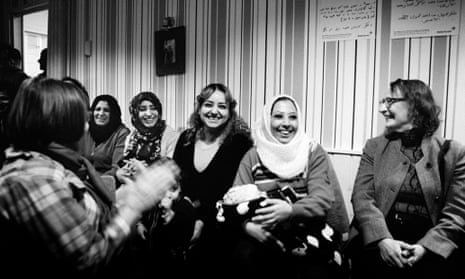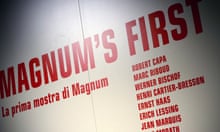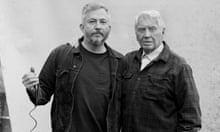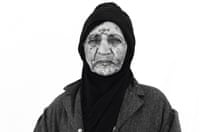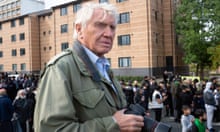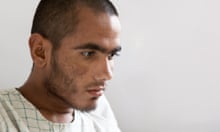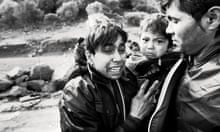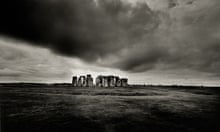In October 2015, I arrived in Lesbos to begin work on a long-term project for the UN High Commissioner for Refugees (UNHCR), documenting the refugee crisis across Europe and the Middle East. It was a shocking, moving and deeply troubling experience. As I wrote in the Observer in November last year: “I thought I had seen it all, but I have never been so overwhelmed as by the human drama unfolding on the beaches of Lesbos. In its sheer scale, it is hard to comprehend; the lack of response impossible to explain or excuse.”
At that time, as I stood among the chaos and horror on the beaches of Lesbos, I could scarcely have imagined that three months later, telling the same story, I would find myself caught in the middle of a snowball fight on the remote island on Nagu on the southern west tip of Finland. Yet even here, in a small island community on the edge of Europe, the refugee crisis has had a huge impact. And as in Lesbos, it’s the local community and volunteers who have worked alongside NGOs to make a difference.
It’s New Year’s Eve and I’m at a cocktail party hosted by the Rotary Club of Nagu. The main topic of conversation is the “guests”. In October the town had been informed by the Finnish Red Cross that the local hotel, the Strandbo, closed for the off-season, would become a temporary home for 100 refugees.
It was a decision not welcomed by all. Nagu is a small, close-knit community, and during the winter period there are few visitors. At most 1,500 people live here during those cold months. At the Rotary Club, people were frank; they worried about bored young men, of attacks on women, and about how Muslims would integrate with their customs.
It was a situation nobody had imagined and few wanted – and not just for the locals. The refugees, mostly from Iraq and Afghanistan, hadn’t expected to find themselves isolated on an island during the winter, where temperature can drop below -10C and the sun rises for just a few hours.
But it is at this point that the people of Nagu made a decision.
“When I was young,” Anders Fagerlund tells me, “I would go to Nagu with my father. As we walked through the town, he would smile, wave and say hello to everybody we passed. Likewise, when we drove home, as we passed each car, he would wave.
“One day I said, ‘Father, do you know everybody in Nagu?’
“‘No,’ he replied, ‘but that is how we do things here.’ And that,” continues Fagerlund, “is how we decided to treat our guests.”
From the start, the people of Nagu made their guests feel welcome. A Facebook group was set up, activities suggested, volunteers came forward. “It was exciting,” says Mona Hemmer, a bastion of Nagu life and one of the organisers of activities for the refugees. “We thought: what can we do to make them feel welcome and help them build a decent life and integrate into our society?”
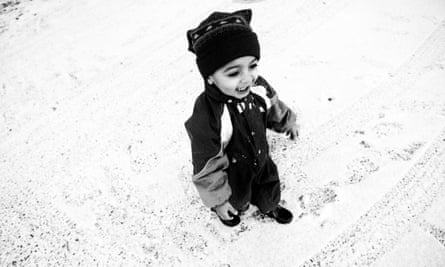
The solution? Social gatherings, a friendship cafe, baking classes, piano lessons, animation and drawing for the children, cultural exchanges, music events, football for both the boys and the girls, ice-skating, daily walks through the tranquil woods and along the shores of the island… With the facilitation of the Finnish Red Cross, the refugees have hardly had an idle moment.
Of course, for the refugees, being busy does not erase their past or the uncertainty of their future. As one of the guests says: “The people here have been amazing, but they can’t take away our nightmares.” These are families who have escaped unimaginable brutality and conflict, as well as having endured the traumatic journey across Europe. Many still find it hard to sleep, aware that until their asylum applications have been processed, they have not reached the end of their journey.
However, the warm welcome of the Nagu people has made a difference. And despite their initial reservations, the islanders now feel that it is the refugees who have brought them something.
The parish has taken a central role and the chaplain’s family has been instrumental in many of the activities. Mirjam Granstrom, the chaplain’s daughter, regularly visits the refugees in their hotel. “This experience really has helped me and many other people to understand a lot of things,” she says. “The refugees in Nagu are warm and emotional people who have lost their home country – in some cases their family and friends – but they still try to make the best of their situation. I think there’s a lot we can learn.”
The community now has concerns about what will happen when the refugees leave. In a few months they will be moved to the larger town of Pargas, but over New Year their accommodation there was firebombed. There was little damage but it is an indication that many in Finland do not welcome refugees. The attack has left them upset and nervous, but has rallied locals to continue their support, even after the refugees have moved.
But it’s not just the welfare of the guests that concerns the people of Nagu – they worry they will leave a gap in the community when they’re gone. Many in Nagu now hope that once their asylum applications have been processed, the refugees will choose to return to Nagu as permanent members of the community.
“The greatest benefit has been togetherness,” Hemmer says. “Cooperation is important in a community with so few inhabitants. But it is also relatively easy to create.
“We did things together when we planned the social gatherings. Now the refugees take part in creating events and so [our bond] with them is strengthened. Togetherness across the borders of different religions.”
The refugee crisis has no easy answers. The mass migration Europe witnessed in 2015 is likely to continue, while countries still struggle to cope with those who have already arrived.
It would be unrealistic to believe that the model of Nagu could work across Europe. What has happened here is only possible with small numbers and a community able to cope with the demands on infrastructure. However, the principal of welcoming strangers, of treating refugees with respect and dignity, for asylum seekers to be seen as guests – it is here that Nagu can serve as a lesson. As Mona Hemmer said to me as I left, “It’s better to light a candle than to curse darkness.”
